Last Updated on 11/09/2020 by Veronica Jones
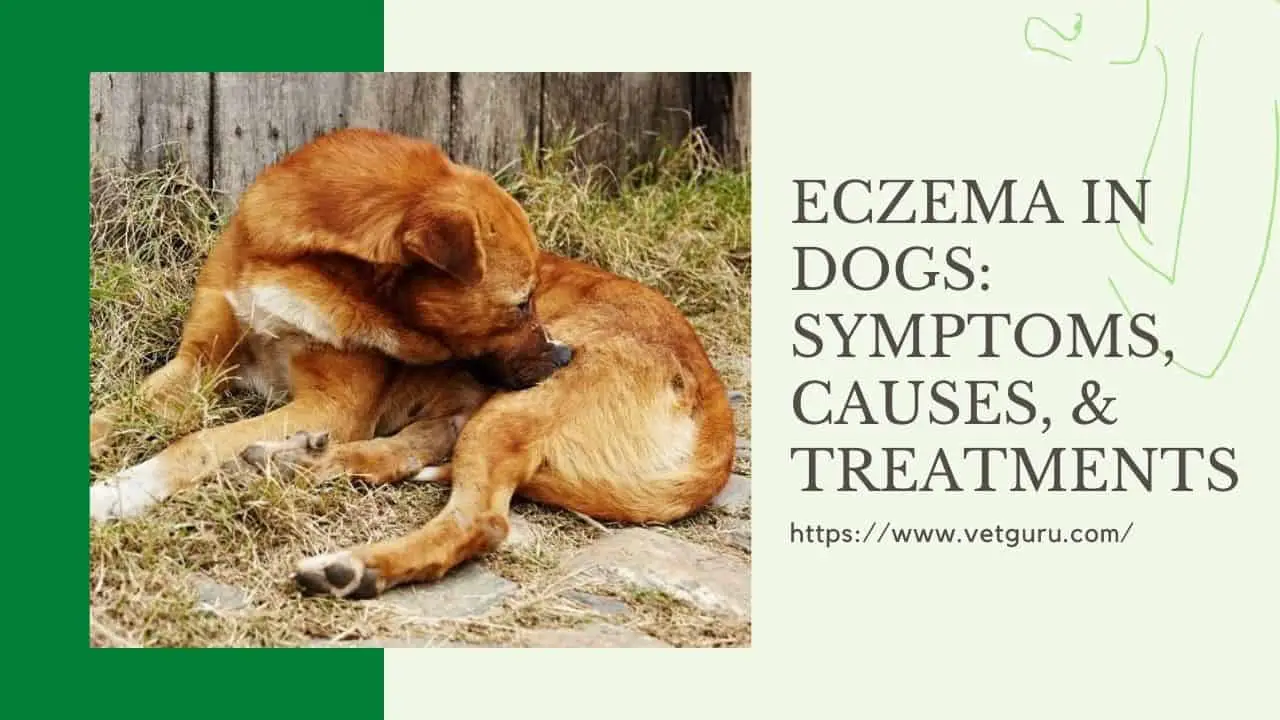
Eczema in dogs is an inflammatory process in the superficial layers of the skin, accompanied by a diverse rash. Eczema is characteristic of the formation of primary and secondary exanthema, along with a tendency to recurrence which often met in dogs and cats; Less common in horses and horned animals.
Overview of Eczema in Dogs
An eczema is a form of acute, subacute, and chronic progressive canine dermatitis. Each form evolves in different ways, diffusing, and spreading differently.
Causes of Eczema in dogs include endogenous and exogenous factors.
1. Exogenous factors
- Physical factors: rubbing, scratching, skin contamination,….
- Chemistry: using irritating ointments and suspensions, washing skin too often with soap, soaking in dirty water for a long time, using anti-parasitic drugs,….
- Physics: effects of light, temperature (the environment is too hot or too cold for animals).
- Microorganism: due to skin sensitivity to microorganisms or decomposition products of microorganisms.
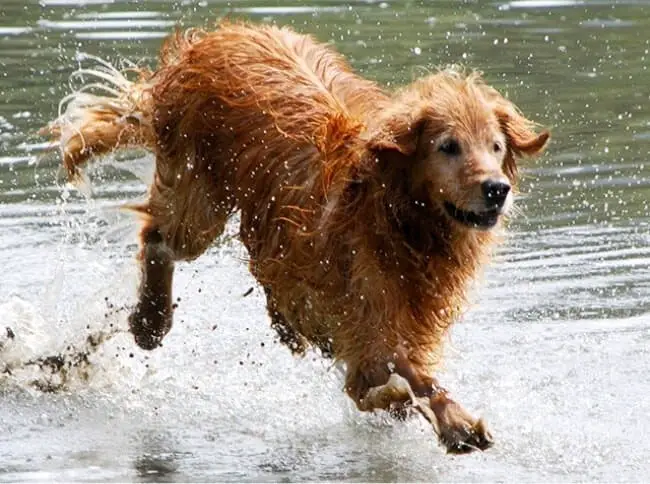
2. Endogenous factors
- Endogenous factors that cause skin sensitization: mental disorders, thyroid disorders, gastritis, hepatitis, nephritis, Inflammation of the gall bladder, hidradenitis, diarrhoea, constipation, lack of vitamins,….
Read more >>> Rabies in Dogs and Cats – Diagnose and Treatment
Signs of Eczema in Dogs
1. Acute eczema
– Stage of erythema
- This stage is characterized by the appearance of red spots on the skin or an area of red spots (which disappears when pressing by the hand), a high local temperature, itching, and painful in the red skin area.
- Dogs scratching the itchy area which allow infections to enter.
- The affected area of the skin is swollen.
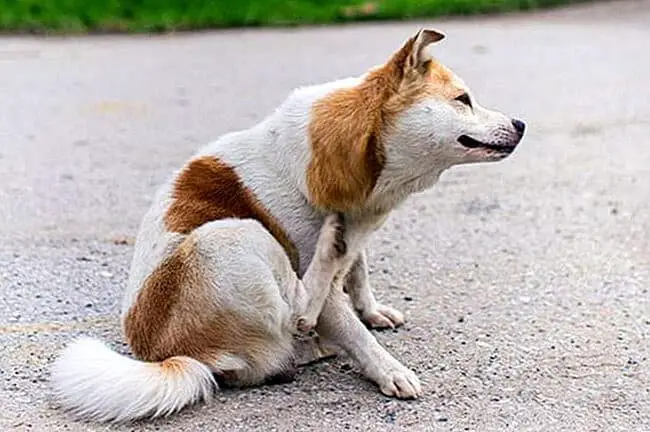
– Nodules stage
- The erythema stage quickly turns into the nodule stage.
- But the nodule is about the size of a green pea, pink-red colour.
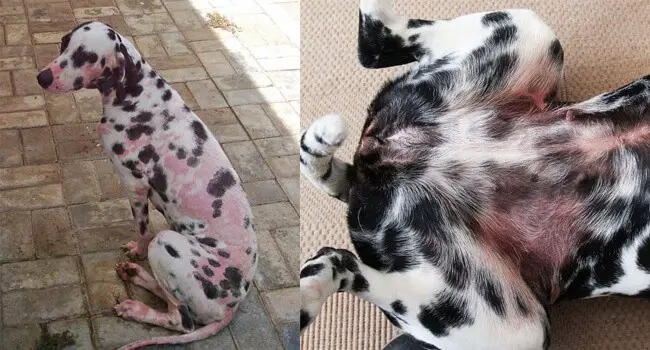
– Blister stage>
- The nodules quickly turn into blisters filled with light-coloured fluid.>
- Some blisters rupture due to increased endodermal pressure to secrete fluid.>
– Scaly stage>
- The exudate gets absorbed and the blisters dry out.>
- Then the tension of the epidermal horny layer gradually decreases, blisters flatten, the skin is sloughed.>
- The epithelium splits and forms a scab on the surface of the skin. The skin gradually recovers back to its original state.>
– The impetigo phase>
- In cases, the pathological process increases, the stage of impetigo will develop.>
- The fluid contained in the cloudy blisters gradually becomes pus-like and the blisters turn into pustules.>
- The pustules rupture on their own or when the dog scratches, the pimples break open and pus comes out.>
- The bacteria develop in the place where pustules rupture.>
– Pus flakes stage>
- Under the influence of many proteolytic enzymes, pustules are broken, the skin is congested, swelling in the affected area.>
- If the area with Eczema exposes to the air and is not exposed to water, the surface will quickly dry out, forming a scaly yellow-green colour.>
– The eczema process in dogs progresses from 2 to 4 weeks, but there are very few systemic disorders.>
– Local changes in the infected skin cause itching.>
– Under unfavourable conditions, the acute progression of eczema can turn into subacute or chronic.>
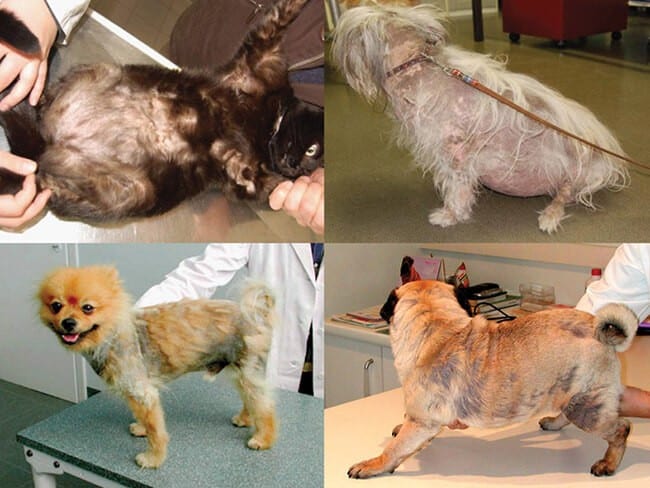
2. Eczema reaction
- A reactive eczema is a secondary form of development from primary Eczema that is spread far from the original site, due to increased skin sensitivity and systemic reactivity in animals.
- All stages appear weaker than at the primary.
- In reactive eczema form, the new rash develops shorter than the primary form.
3. Neurological eczema
- Neurological eczema occurs as a result of neuro disorders, recorded in dogs and horses.
- Dogs with Care usually got this form of Eczema
- Neurological eczema is characterized by the symmetry of areas of nerve damage and disturbance (mild paralysis, polio, euphoria or inhibition).
4. Eczema near the wound
- Eczema appears in the area around the burn,…
- In many cases, blisters and pustules form, following the discharge of pus with complications.
- This form of Eczema can end with folliculitis, dermatitis, and hair loss.
Read more >>> Calcium Deficiency Seizure in Dogs and Cats ( Before and after giving childbirth)
How to treat Eczema in dogs
1. Systemic treatment
- Daily intravenous injection of 10% calcium chloride solution 1 – 15ml.
- An intravenous injection every day or every other day a 20% solution of sodium thiosulphate 5 – 15ml. It needs at least 10 – 15 injections.
- Vitamin C 5% intramuscular injection 5ml / a time / day, inject at least 15-20 times.
2. Local treatment
- Wash and trim the area of Eczema, apply the surface with 5% Iodine alcohol.
- Using antibacterial, anti-inflammatory, astringent, drying, anti-itch,…
- Using 1 – 10% tannin, zinc fat, … which has an astringent effect on the infected area.
- Iodine alcohol 5% – 10%, antibiotics, … have antiseptic effects on the lesion.
- When treating animals with a familiar, greasy phenomenon of the Eczema lesion with the drug used. It is necessary to regularly change local treatment drugs.
- Take adequate nutritional care for dogs, abstain from chicken for dogs until they are gone.
- Keep the dog in a quiet place, avoiding the effects that cause stress on the animal.
We hope that the information about Eczema in a dog in Vetguru will help you with disease prevention and treatment.

